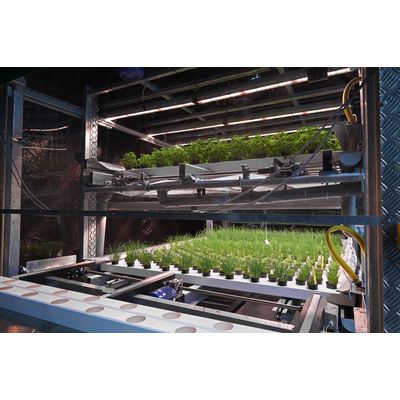Our Vertical Farming System is designed to minimize labor, energy, and water usage while addressing the recent scarcity of land, a vital resource in the horticultural industry.
With our Vertical Farming System, you can increase your production output without raising costs, expanding your current facility, or investing in new ones.
We drive your production into the future, enabling automated, cost-effective cultivation near your end market, utilizing any available facility, whether it’s an existing greenhouse, a tall urban building, an old production warehouse, or even a basement unit.



